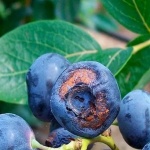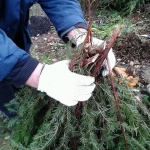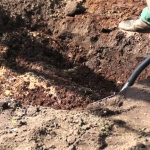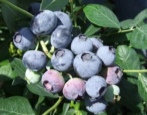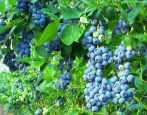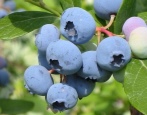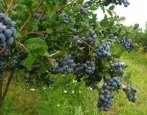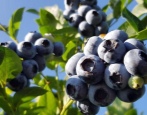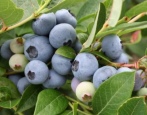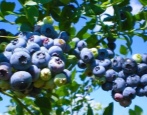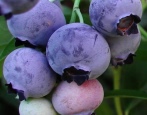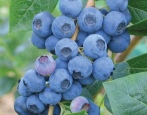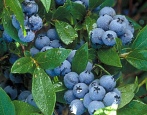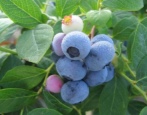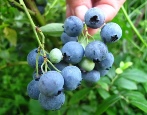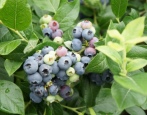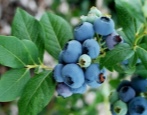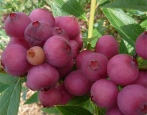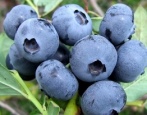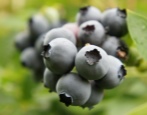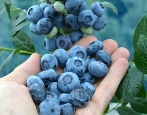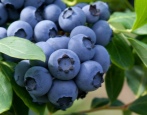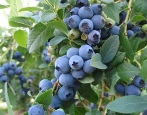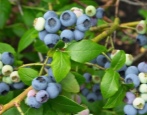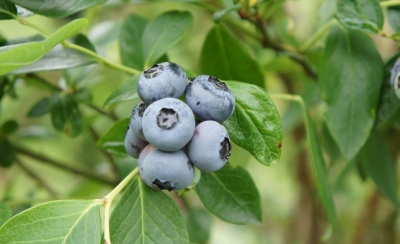
- Authors: New Jersey (USA)
- Appeared when crossing: (Ivanhoe x Erlible) x [(Berkeley x Erlible) x (Covill x Atlantic)
- Name synonyms: Vaccinium Duke
- Year of approval: 2018
- Ripening terms: mid-early
- Growth type: medium-sized
- Bush height, m: 1,5-1,8
- Taste: sweet wine, slightly tart
- Yield: high
- Average yield: 158 kg / ha (6-8 kg per bush)
Blueberry Duke (Duke) is an excellent option for growing in a temperate climate, included in the Russian Federation in the register of industrial varieties for its valuable properties: early ripening, winter hardiness, productivity and unique taste. In Europe, blueberries are among the most cultivated varieties in berry farms, since they have the ability to slow down the aging process, strengthen immunity, and prevent the development of inflammatory processes.
Breeding history
Blueberry Duke (Duke) was bred by American scientists almost half a century ago, but the history of the creation of the variety began at the beginning of the 20th century, when breeding work made it possible to obtain more than 4 dozen tall varieties. The name Duke (translated as Duke) has nothing to do with cherry and sweet cherry hybrids: it is simply a characteristic of the unique properties, unpretentiousness and yield of the variety, recognized as the most common in Russian territory.
As the source, among others, the varieties of Earley Blue and Ivanhoe were taken, but it took several years of hard work of breeders to obtain Duke, and almost a decade and a half to be included in the Russian register of industrial varieties. In Russia, Duke blueberry was included in the State Register only in 1918, but long before that moment it had gained popularity among gardeners.
Description of the variety
Excellent taste is attributed to the distinctive features of this type of demanded berry. It is obtained due to a peculiar growth - the bushes reach 1.7 m, while branching weakly, and this allows the berries to fill with juice and nutrients, warming up well in the sun. The decorativeness of the bushes allows them to be used in landscape design to decorate land plots of variable area. They look great throughout the growing season, when blooming in late May with bell-shaped white-pink flowers, and in autumn. Characteristics:
tall, slow emergence of shoots (no need for frequent pruning);
large berries, fruiting stability;
self-fertility, frost resistance (the variety is not afraid of recurrent frosts);
transportability of fruits and great taste, high demand among buyers.
There are many adherents of Duke blueberries among gardeners, this is easily explained by its resistance to diseases and pests, cold climate, rapid ripening of berries and their universal use. By the second year, fruiting begins, but harvesting on the desired scale is expected later. But with proper care, fruiting can last up to 20 years.
Fruit characteristics
Rounded berries reach a decent diameter and weight of 2 g. The second name of this variety among the people - Blue grapes, for growing in the likeness of bunches. The characteristic shade of ripe fruits is obtained due to a bluish bloom on the dark blue skin, which is dense and elastic. It is she who gives the variety a unique ability to easily carry transportation over long distances. Storage does not affect presentability and presentation, only enhances the sweetness and aroma of large berries.
Taste qualities
The pulp of medium density, filled with juice, has a light, almost invisible against the background of sweetness, sourness. This gives it a special piquancy. When consumed, it leaves a pronounced, tangible and pleasant aftertaste. The aroma is preserved during heat treatment - vitamin compotes and multicomponent preparations are especially successful, but you can also freeze for baking, cook preserves and jams, and use them for dessert in their original form. Reviews say that storage only improves the taste, the aftertaste acquires a fruity-wine tint, the pleasant astringency is minimized.
Ripening and fruiting
The crop does not ripen all at once, it is harvested in several approaches, but it can be stored in the refrigerator for a 3-week period, processed at the same time. One adult bush leaves 6-8 kg, you can make a decent supply for the winter by freezing, drying and canning berries with valuable properties. In industrial cultivation, mechanical harvesting means can be used. Ripening dates may be postponed due to the peculiarities of the climate or a particular season, but the nature of the changes is not dramatic.
Yield
Productivity depends on the age of the shrub as well as taste. Therefore, the first ovaries are removed to accelerate growth and vegetation. A record short time passes between flowering and ripening of berries - one and a half months, the average yield is from 6 to 8 kg per bush. It increases if pollinators are planted nearby - blueberry varieties with similar flowering times. Experienced gardeners will certainly do this, although the variety is considered self-fertile and produces crops even without such a neighborhood.
Duke blueberry has become widespread due to its ability to long-term fruiting - with proper care, it can bear fruit for up to half a century. The equally popular varieties Sunrise, Reka or Patriot are recommended as pollinators.
Growing and care
For cultivation, it is advised to purchase high-quality planting material from the nursery, subsequently the bushes can be propagated by division, cuttings and layering:
for planting in regions with a difficult climate, they choose spring, early May;
in less problematic areas, you can plant blueberries in the fall, no later than a month before the onset of cold weather, so that the berry has time for rooting;
the plant needs regular watering, it does not tolerate drought;
during the fruiting period, the amount of water is increased;
the soil should be light sandy or sour peat;
blueberries cannot be planted in the place where vegetables were planted;
the selected area must have good illumination, otherwise the bush will grow intensively, but will refuse to bear fruit.
Top dressing, timely watering, periodic pruning are important conditions for obtaining a high yield, extending the fruiting period. However, over-watering can damage the plant, so it is advised to do it once a week in stable conditions and double it during the fruiting period. One bush requires a bucket of settled, not cold water.
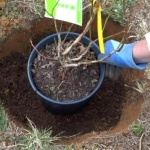
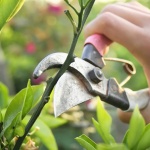
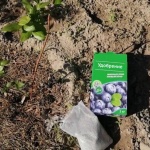
Disease and pest resistance
It is considered to be less susceptible to common diseases and garden pests, but it can be affected by gray rot or black cancer. Leaf rollers and May beetles can affect crops, but insecticides can be used to prevent this and a thorough cleaning of the fall garden can be done. A good result is obtained by spring treatment with fungicides, which is carried out before the appearance of flower buds.
Duke blueberry is an excellent variety, which is one of the most popular, due to its valuable properties - winter hardiness, excellent taste, unpretentiousness, transportability and preservation of presentability during long-term storage.
